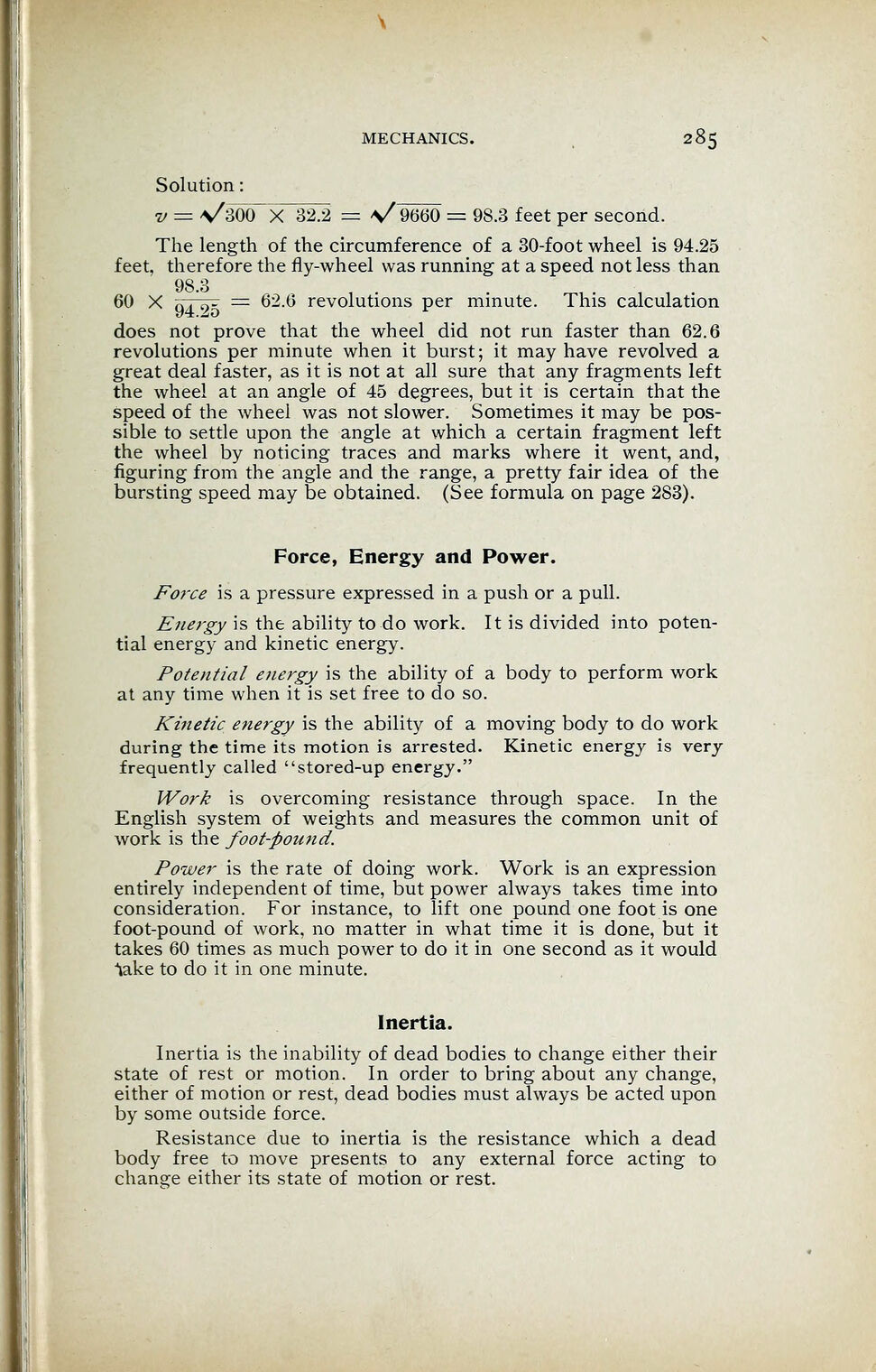
Full resolution (JPEG) - On this page / på denna sida - Mechanics - To calculate the speed of a bursted fly-wheel from the distance the fragments are thrown - Force, energy and power - Inertia

<< prev. page << föreg. sida << >> nästa sida >> next page >>
Below is the raw OCR text
from the above scanned image.
Do you see an error? Proofread the page now!
Här nedan syns maskintolkade texten från faksimilbilden ovan.
Ser du något fel? Korrekturläs sidan nu!
This page has never been proofread. / Denna sida har aldrig korrekturlästs.
MECHANICS. 285
Solution
:
v = \/300 X 32.2 = V9660 = 98.3 feet per second.
The length of the circumference of a 30-foot wheel is 94.25
feet, therefore the fly-wheel was running at a speed not less than
60 X q *
9
- = 62.6 revolutions per minute. This calculation
does not prove that the wheel did not run faster than 62.6
revolutions per minute when it burst ; it may have revolved a
great deal faster, as it is not at all sure that any fragments left
the wheel at an angle of 45 degrees, but it is certain that the
speed of the wheel was not slower. Sometimes it may be pos-
sible to settle upon the angle at which a certain fragment left
the wheel by noticing traces and marks where it went, and,
figuring from the angle and the range, a pretty fair idea of the
bursting speed may be obtained. (See formula on page 283).
Force, Energy and Power.
Force is a pressure expressed in a push or a pull.
Energy is the ability to do work. It is divided into poten-
tial energy and kinetic energy.
Potential energy is the ability of a body to perform work
at any time when it is set free to do so.
Kinetic energy is the ability of a moving body to do work
during the time its motion is arrested. Kinetic energy is very
frequently called "stored-up energy."
Work is overcoming resistance through space. In the
English system of weights and measures the common unit of
work is the foot-pound.
Power is the rate of doing work. Work is an expression
entirely independent of time, but power always takes time into
consideration. For instance, to lift one pound one foot is one
foot-pound of work, no matter in what time it is done, but it
takes 60 times as much power to do it in one second as it would
"take to do it in one minute.
Inertia.
Inertia is the inability of dead bodies to change either their
state of rest or motion. In order to bring about any change,
either of motion or rest, dead bodies must always be acted upon
by some outside force.
Resistance due to inertia is the resistance which a dead
body free to move presents to any external force acting to
change either its state of motion or rest.
<< prev. page << föreg. sida << >> nästa sida >> next page >>